CAMDEN INTERNATIONAL FILM FESTIVAL 2013 – THIS THING IS A MOVEMENT
 “Communities are powerful things,” civil rights lawyer (and my roommate for the weekend) Shahid Buttar said to me when I described what to expect from his first documentary film festival experience at the 2013 Camden International Film Festival this past weekend. Buttar was in lovely Maine to appear on a panel about privacy rights following a screening of the film Terms and Conditions May Apply, and the focus of his work is on building movements from the ground up. What he experienced in Camden was another version of a community-based movement, centered around a passionate love for nonfiction filmmaking. This is a dispatch from within that community. CIFF (full disclosure: where my own Fake It So Real screened in 2011) has become a crucial stop on a documentary festival circuit that has helped advance a new doc era.
“Communities are powerful things,” civil rights lawyer (and my roommate for the weekend) Shahid Buttar said to me when I described what to expect from his first documentary film festival experience at the 2013 Camden International Film Festival this past weekend. Buttar was in lovely Maine to appear on a panel about privacy rights following a screening of the film Terms and Conditions May Apply, and the focus of his work is on building movements from the ground up. What he experienced in Camden was another version of a community-based movement, centered around a passionate love for nonfiction filmmaking. This is a dispatch from within that community. CIFF (full disclosure: where my own Fake It So Real screened in 2011) has become a crucial stop on a documentary festival circuit that has helped advance a new doc era.
Coming later in the year—following True/False, Hot Docs and other all-nonfiction festivals—Camden has the sense at times of a “best-of-the-fests” event, with favorites like The Act of Killing, These Birds Walk, Expedition to the End of the World, The Last Station, Our Nixon, Bending Steel, Caucus and Cutie and the Boxer (not to mention all-time classics such as Darwin’s Nightmare) giving Mainers a chance to see the most celebrated documentary work out there. But festival founder and director Ben Fowlie always has his keen eye out for films that have yet to make a splash, like the experimental Night Labor and the award-winning but largely overlooked Pablo’s Winter.
Still, it’s the energy surrounding the films that speaks most to the excitement within this new doc community. Very little money is made by (these mostly American) documentary filmmakers, so the tendency is to sometimes be too gentle on each other’s work. But between the dancing and drinking and lobster cracking, you could find vigorous debates about the foundational aspects of doc filmmaking going on everywhere in Camden between filmmakers, other festival programmers, critics and local fans. I especially enjoyed arguing at length with producer and cinematographer Ryan Scafuro over whether or not he should have cut one single specific shot from his “Emerging Cinematic Vision” award-winning Bending Steel. There is a palpable sense that great things are possible and that if you are making nonfiction right now, you are part of something happening. Camden has built on the blueprint drawn up so energetically by True/False: bring them in, play good films, show them how to party and let a culture grow.
CIFF’s programming is a refreshing mix of solid crowd-pleasers, hits and risks. Without these personal films expanding the documentary form or telling good stories or creating meaningful political art or exposing lasting images, the community would have very little consequence. What I saw there, though not necessarily a collection of masterpieces, proved to me that these are, indeed, exciting times.
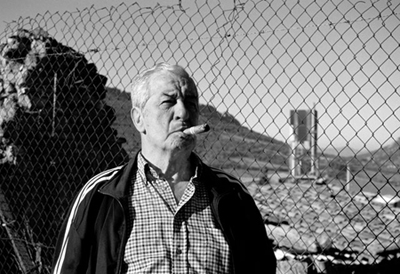 Pablo’s Winter (Scotland/Spain, Chico Pereira, 76m) — Pablo is a lovably grumpy old man in a small Spanish mining town who has to stop smoking after a bad visit to the doctor. He spends his time idling and talking about the good old days with his wife and grandson, who is getting better at riding his bike. He goes to help a farmer friend deal with a dead sheep. He is constantly tempted by cigarettes. Over the course of the film, his face softens, he dances with his wife, he faces his mortality. These scenes are moving or funny or sweet and are remarkably well-structured, shot and edited like a fiction film, with impossible-to-stage documentary observations that inject many moments with an uncanny richness. Only towards the end of the film do we fully understand his relationship with the mines, a revelation that opens the iris to a surprisingly complicated and deeply profound narrative moment: the most heroic cigarette lighting I’ve ever seen in a film—an act of defiance against the dehumanizing process of growing old in a brutally capitalistic world.
Pablo’s Winter (Scotland/Spain, Chico Pereira, 76m) — Pablo is a lovably grumpy old man in a small Spanish mining town who has to stop smoking after a bad visit to the doctor. He spends his time idling and talking about the good old days with his wife and grandson, who is getting better at riding his bike. He goes to help a farmer friend deal with a dead sheep. He is constantly tempted by cigarettes. Over the course of the film, his face softens, he dances with his wife, he faces his mortality. These scenes are moving or funny or sweet and are remarkably well-structured, shot and edited like a fiction film, with impossible-to-stage documentary observations that inject many moments with an uncanny richness. Only towards the end of the film do we fully understand his relationship with the mines, a revelation that opens the iris to a surprisingly complicated and deeply profound narrative moment: the most heroic cigarette lighting I’ve ever seen in a film—an act of defiance against the dehumanizing process of growing old in a brutally capitalistic world.
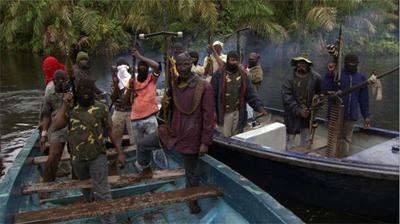 Big Men (USA, Rachel Boynton, 99m) — Boynton (Our Brand is Crisis) is a unique American director. She makes deeply personal films about international stories. Years in the making, Big Men is a big-time documentary thriller that builds intrigue not just from political mystery or scandal but from perfectly-tuned observations, small moments that reveal unexpected connections and revelatory contradictions. After a small U.S. energy company finds oil for the first time off the coast of Ghana, the discovery leads to corporate, social, political and personal battles from Dallas to Accra. Meanwhile, Boyton travels through Nigeria, talking to reporters, rebels, government officials and local kings to explore the vastly complicated impact of an oil discovery on a nation. There are no easy answers. The access is dizzying and Boyton’s interview style is to gently pull complex truths from her fascinating, fully-human subjects, not just to move the story along. This is ambitious, psychological cinema about the performance of power and masculinity.
Big Men (USA, Rachel Boynton, 99m) — Boynton (Our Brand is Crisis) is a unique American director. She makes deeply personal films about international stories. Years in the making, Big Men is a big-time documentary thriller that builds intrigue not just from political mystery or scandal but from perfectly-tuned observations, small moments that reveal unexpected connections and revelatory contradictions. After a small U.S. energy company finds oil for the first time off the coast of Ghana, the discovery leads to corporate, social, political and personal battles from Dallas to Accra. Meanwhile, Boyton travels through Nigeria, talking to reporters, rebels, government officials and local kings to explore the vastly complicated impact of an oil discovery on a nation. There are no easy answers. The access is dizzying and Boyton’s interview style is to gently pull complex truths from her fascinating, fully-human subjects, not just to move the story along. This is ambitious, psychological cinema about the performance of power and masculinity.
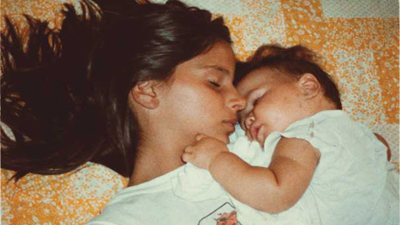 Elena (Brazil, Petra Costa, 80m) — An act of cinematic reincarnation meant to alleviate a lifetime of pain, Elena is deeply personal, often luminous, sometimes tedious, therapeutic filmmaking. Elena is the director’s sister, a spectre of a character that hovers over the film, glimpsed in haunting home movie footage and perhaps invades her younger sister at one point. In that way, Elena could be called Petra—this is self-portrait by way of melodrama. And like a lot of melodrama, it has its moments of over-emotionalism that can make the proceedings a tad morbid. The desire to know what happened to Elena feels, at times, like we’re being forced to chase ambulances. But when the film turns more strongly to self-analysis, when Petra utters the line, “What’s my part in this film,” the remarkably evocative images take over and conjure something deeply restorative. The daringly expressive watery climax is some of the most truly poetic nonfiction cinema you’ll see all year. With Elena, Petra says goodbye, powerfully.
Elena (Brazil, Petra Costa, 80m) — An act of cinematic reincarnation meant to alleviate a lifetime of pain, Elena is deeply personal, often luminous, sometimes tedious, therapeutic filmmaking. Elena is the director’s sister, a spectre of a character that hovers over the film, glimpsed in haunting home movie footage and perhaps invades her younger sister at one point. In that way, Elena could be called Petra—this is self-portrait by way of melodrama. And like a lot of melodrama, it has its moments of over-emotionalism that can make the proceedings a tad morbid. The desire to know what happened to Elena feels, at times, like we’re being forced to chase ambulances. But when the film turns more strongly to self-analysis, when Petra utters the line, “What’s my part in this film,” the remarkably evocative images take over and conjure something deeply restorative. The daringly expressive watery climax is some of the most truly poetic nonfiction cinema you’ll see all year. With Elena, Petra says goodbye, powerfully.
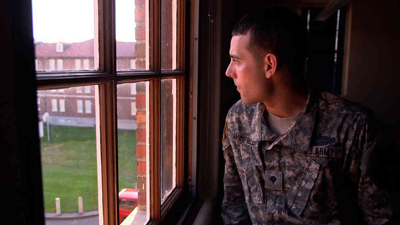 The Kill Team (USA, Dan Krauss, 79m) — The takeaway from Dan Krauss’ riveting story about the infamous army “kill team” that was convicted of murdering three innocent Afghan civilians in 2008 is the same for many films about war: the military is a messed up institution at its core, which brainwashes and empowers (sometimes) sociopaths and then covers up this bigger truth to maintain the illusion of order. The conclusions may not be new but the story Krauss tells and the way he tells it is fresh and provocative. The young men interviewed are all morally ambiguous and completely mesmerizing, their faces expressing the ambiguities and deeper truths that their words often attempt to simplify or even erase. The main character is Specialist Adam Winfield, who’s boyish innocence gets slowly undercut over the course of the film. His family’s struggle to free a son who was “caught between a rock and a hard place” grows more questionable throughout, until the standard redemptive whistle -blower story arc completely unravels before our eyes. No one is innocent. The Kill Team is the kind of documentary that prioritizes faces and language over quick and easy shocks and makes you think about how terrible other films can be.
The Kill Team (USA, Dan Krauss, 79m) — The takeaway from Dan Krauss’ riveting story about the infamous army “kill team” that was convicted of murdering three innocent Afghan civilians in 2008 is the same for many films about war: the military is a messed up institution at its core, which brainwashes and empowers (sometimes) sociopaths and then covers up this bigger truth to maintain the illusion of order. The conclusions may not be new but the story Krauss tells and the way he tells it is fresh and provocative. The young men interviewed are all morally ambiguous and completely mesmerizing, their faces expressing the ambiguities and deeper truths that their words often attempt to simplify or even erase. The main character is Specialist Adam Winfield, who’s boyish innocence gets slowly undercut over the course of the film. His family’s struggle to free a son who was “caught between a rock and a hard place” grows more questionable throughout, until the standard redemptive whistle -blower story arc completely unravels before our eyes. No one is innocent. The Kill Team is the kind of documentary that prioritizes faces and language over quick and easy shocks and makes you think about how terrible other films can be.
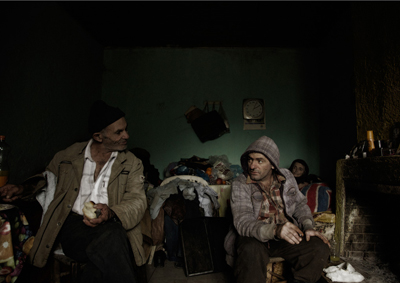 To The Wolf (Greece/Fran/UK, Aran Hughes and Christina Koutsospyrou, 74m) — A precisely composed, very dark fiction/nonfiction hybrid about a Greece I’ve never seen, To the Wolf (Sto Lyko) is the kind of film that would be hard to describe if there weren’t so many other films like it. The images are rich and the people are poor, in constant talk (when there are words at all) of their personal and national economic state of austerity. This is a gray, dank film about nervous eyes and bodies in suspended animation—frozen by economic circumstance and by history itself—a perhaps dying breed of people, left in the cold by late capitalism’s lurch. The TV doesn’t work, the debates are over choices of cheaper cigarettes or beer, families discuss eating wood. A woman asks, “Can we survive on birds alone?” But idle poetry is still idle; eventually the “slow cinema” lethargy and one-note miserablism damages the elemental aspects at work. A surprisingly violent and unnerving (and divisive) ending explodes the tension, however, revealing the fictional constructs of the whole film and delivering a mysteriously palpable release.
To The Wolf (Greece/Fran/UK, Aran Hughes and Christina Koutsospyrou, 74m) — A precisely composed, very dark fiction/nonfiction hybrid about a Greece I’ve never seen, To the Wolf (Sto Lyko) is the kind of film that would be hard to describe if there weren’t so many other films like it. The images are rich and the people are poor, in constant talk (when there are words at all) of their personal and national economic state of austerity. This is a gray, dank film about nervous eyes and bodies in suspended animation—frozen by economic circumstance and by history itself—a perhaps dying breed of people, left in the cold by late capitalism’s lurch. The TV doesn’t work, the debates are over choices of cheaper cigarettes or beer, families discuss eating wood. A woman asks, “Can we survive on birds alone?” But idle poetry is still idle; eventually the “slow cinema” lethargy and one-note miserablism damages the elemental aspects at work. A surprisingly violent and unnerving (and divisive) ending explodes the tension, however, revealing the fictional constructs of the whole film and delivering a mysteriously palpable release.
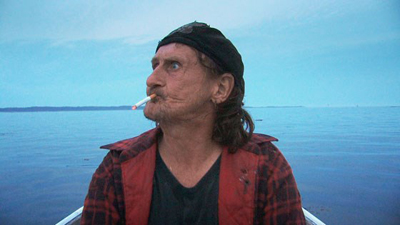 Night Labor (USA, David Redmon and Ashley Sabin, 64m) — Night Labor is another hybrid film that uses minimalism and performance to poke at the old corpse of documentary purism. Sherman Frank Merchant III has an amazing face and that’s enough to carry most of the film’s 64-minute running time, but luckily directors Redmon and Sabin pack this purposely “small” film with some full-size ideas. Over the course of the movie, we simply watch Sherman live in long takes, as he travels from the shed he lives in, works all night, and then starts the next day. He remains wordless throughout, with the occasional mumbled rant or classic rock lyric bumbling out from his worn mouth. The trick here is that this is all semi-staged, a documentary “experiment with situations” as Redmon described it. Sherman is a “composite” character, an actor playing himself and many others like him. The images of labor, bodies, water and animals are quietly expressionistic and sometimes almost absurdist. There is a tension between a Nikolaus Geyrhalter-esque rigor and a handmade quality with focus pops and automatic variations in exposure that give the film an off-kilter unpredictability. Ultimately Night Labor is a film about Maine and the stark feeling of everyday loneliness, and the processes of capturing and recreating these places/sensations.
Night Labor (USA, David Redmon and Ashley Sabin, 64m) — Night Labor is another hybrid film that uses minimalism and performance to poke at the old corpse of documentary purism. Sherman Frank Merchant III has an amazing face and that’s enough to carry most of the film’s 64-minute running time, but luckily directors Redmon and Sabin pack this purposely “small” film with some full-size ideas. Over the course of the movie, we simply watch Sherman live in long takes, as he travels from the shed he lives in, works all night, and then starts the next day. He remains wordless throughout, with the occasional mumbled rant or classic rock lyric bumbling out from his worn mouth. The trick here is that this is all semi-staged, a documentary “experiment with situations” as Redmon described it. Sherman is a “composite” character, an actor playing himself and many others like him. The images of labor, bodies, water and animals are quietly expressionistic and sometimes almost absurdist. There is a tension between a Nikolaus Geyrhalter-esque rigor and a handmade quality with focus pops and automatic variations in exposure that give the film an off-kilter unpredictability. Ultimately Night Labor is a film about Maine and the stark feeling of everyday loneliness, and the processes of capturing and recreating these places/sensations.
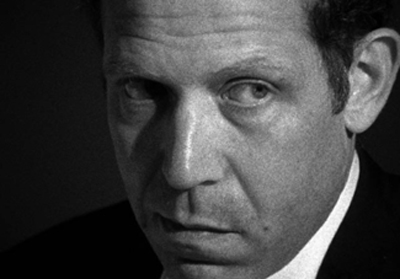 Public Hearing (USA, James N. Kienitz Wilkins, 110m) — This word-for-word reenactment of a real public hearing about the proposed transformation of an Allegany, NY Wal-Mart into a Super Wal-Mart plays like a bridge between past forms and current trends toward hybridization in documentary. Shot entirely in 16mm close-up, there is a touch of Frederick Wiseman, a dash of Emile de Antonio and a whole lot of community theater. Meanwhile, the movie’s backstory—the filmmakers discovered the source transcript online and cast the parts and just went out and made the thing—is pure modern freeform nonfiction filmmaking. Formally, they do just enough with spare means to keep it working: the images build and the performances are all pretty solid. The commitment to the verbatim reenactment has its costs at times (I’m not sure I’d actually stick around for this whole meeting), but ultimately the faithfulness pays off as a winning, lived-in celebration of the lovely, absurd, passionate voices of real people in their own spaces. That tension between real and constructed is at the heart of most great nonfiction these days and should be celebrated in all corners.
Public Hearing (USA, James N. Kienitz Wilkins, 110m) — This word-for-word reenactment of a real public hearing about the proposed transformation of an Allegany, NY Wal-Mart into a Super Wal-Mart plays like a bridge between past forms and current trends toward hybridization in documentary. Shot entirely in 16mm close-up, there is a touch of Frederick Wiseman, a dash of Emile de Antonio and a whole lot of community theater. Meanwhile, the movie’s backstory—the filmmakers discovered the source transcript online and cast the parts and just went out and made the thing—is pure modern freeform nonfiction filmmaking. Formally, they do just enough with spare means to keep it working: the images build and the performances are all pretty solid. The commitment to the verbatim reenactment has its costs at times (I’m not sure I’d actually stick around for this whole meeting), but ultimately the faithfulness pays off as a winning, lived-in celebration of the lovely, absurd, passionate voices of real people in their own spaces. That tension between real and constructed is at the heart of most great nonfiction these days and should be celebrated in all corners.
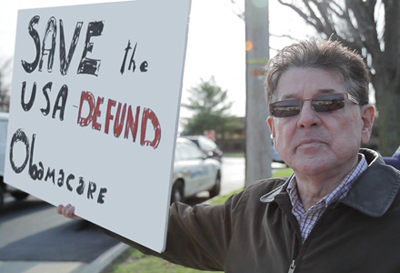 Town Hall (USA, Sierra Pettengill and Jamila Wignot, 74m) — The earnest, ordinary side to Caucus’ charismatic and ridiculous political theater, Town Hall is a portrait of two Tea Partiers in small-town Pennsylvania during the run up to the 2012 election. Katy became an insta-cable-news YouTube celebrity when she told former Sen. Arlen Specter at a raucous town hall meeting in 2009 that he had “awakened a sleeping giant” and that Obama was going to turn us all into brainless commies, etc. John is a self-professed ideologue, who went from being an unelectable politician to a loudmouth activist and organizer. There is real value in trying to look beyond the culture war headlines and casting a non-judgmental eye on a legit and important political movement, and the filmmakers do a fairly good job of gently revealing the political incoherence of both characters without ever looking down on them. But the film peels back the layers and there’s not much there—maybe that’s the point? Ultimately this is a noble experiment in attempted humanism, but the casually racist John might be one of the most unlikable characters in recent memory. And while Katy’s wide-eyed enthusiasm is easier to like, the unreality she lives in (especially evident on election night) is hard to sympathize with. I’m not sure how productive the whole thing is, but I remember vividly the devastation I personally felt in 2004 after Bush was reelected and you can feel that very real pain in the film’s best moments. Still, these are pretty detestable characters in many ways, though I assume they’d think I was detestable if a doc was made about me.
Town Hall (USA, Sierra Pettengill and Jamila Wignot, 74m) — The earnest, ordinary side to Caucus’ charismatic and ridiculous political theater, Town Hall is a portrait of two Tea Partiers in small-town Pennsylvania during the run up to the 2012 election. Katy became an insta-cable-news YouTube celebrity when she told former Sen. Arlen Specter at a raucous town hall meeting in 2009 that he had “awakened a sleeping giant” and that Obama was going to turn us all into brainless commies, etc. John is a self-professed ideologue, who went from being an unelectable politician to a loudmouth activist and organizer. There is real value in trying to look beyond the culture war headlines and casting a non-judgmental eye on a legit and important political movement, and the filmmakers do a fairly good job of gently revealing the political incoherence of both characters without ever looking down on them. But the film peels back the layers and there’s not much there—maybe that’s the point? Ultimately this is a noble experiment in attempted humanism, but the casually racist John might be one of the most unlikable characters in recent memory. And while Katy’s wide-eyed enthusiasm is easier to like, the unreality she lives in (especially evident on election night) is hard to sympathize with. I’m not sure how productive the whole thing is, but I remember vividly the devastation I personally felt in 2004 after Bush was reelected and you can feel that very real pain in the film’s best moments. Still, these are pretty detestable characters in many ways, though I assume they’d think I was detestable if a doc was made about me.
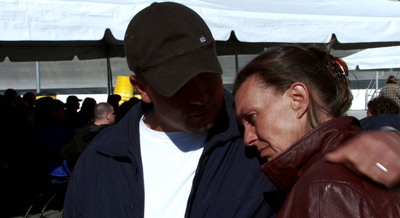 Remote Area Medical (USA, Jeff Reichert and Farihah Zaman, 80m) — No film at Camden (or this year?) hit me on a personal level like Remote Area Medical. It is a feat of collaborative cinematic journalism and works most potently as a movie about the importance of empathy and compassion in a just society. Filmed mostly over three long days (with interviews later edited in) by several teams of filmmakers, this is a wide-ranging portrait of the titular group of volunteer health providers as they set up a makeshift hospital in the middle of the enormous NASCAR speedway at Bristol, Tennessee. We follow the process of people arriving, waiting all night and hoping for a number that will get them through the gates to receive the medical attention they need. Of course no one has insurance, so this is a rare chance for these damaged people to save their lives, and this sense of desperation is palpable. One scene of a woman lying to the parking lot ticket-giver to try to get her mother inside is particularly heartbreaking. Many ailments are handled by these downright heroic healthcare providers. But it’s the scenes of dental work that provide the film with its most moving, disturbing, emotionally wrenching and even metaphorical moments. Teeth were talked about by Freud for good reason and here the filmmakers use extended, unbelievably-hard-to-watch scenes of dental surgery to break the audience down, forcing an identification with poor Southern people that traditional documentary audiences may have had a hard time empathizing with at the beginning of the film. This use of raw cinematic tools to create compassion gives the film a nobility that’s hard to match. At least it worked for me. I come from a very poor Southern family. My mother just had all her teethed restored, after not having them for a while and suffering physically and emotionally because of it. When the film shows the renewed sense of hope on the people’s faces from the simple act of getting new teeth put in, I could not help but think of my own mother. This is not just personal, it’s also political. For Americans to fight for a better society, we must understand who and what we are fighting for. Remote Area Medical surprisingly took me to a place of new understanding.
Remote Area Medical (USA, Jeff Reichert and Farihah Zaman, 80m) — No film at Camden (or this year?) hit me on a personal level like Remote Area Medical. It is a feat of collaborative cinematic journalism and works most potently as a movie about the importance of empathy and compassion in a just society. Filmed mostly over three long days (with interviews later edited in) by several teams of filmmakers, this is a wide-ranging portrait of the titular group of volunteer health providers as they set up a makeshift hospital in the middle of the enormous NASCAR speedway at Bristol, Tennessee. We follow the process of people arriving, waiting all night and hoping for a number that will get them through the gates to receive the medical attention they need. Of course no one has insurance, so this is a rare chance for these damaged people to save their lives, and this sense of desperation is palpable. One scene of a woman lying to the parking lot ticket-giver to try to get her mother inside is particularly heartbreaking. Many ailments are handled by these downright heroic healthcare providers. But it’s the scenes of dental work that provide the film with its most moving, disturbing, emotionally wrenching and even metaphorical moments. Teeth were talked about by Freud for good reason and here the filmmakers use extended, unbelievably-hard-to-watch scenes of dental surgery to break the audience down, forcing an identification with poor Southern people that traditional documentary audiences may have had a hard time empathizing with at the beginning of the film. This use of raw cinematic tools to create compassion gives the film a nobility that’s hard to match. At least it worked for me. I come from a very poor Southern family. My mother just had all her teethed restored, after not having them for a while and suffering physically and emotionally because of it. When the film shows the renewed sense of hope on the people’s faces from the simple act of getting new teeth put in, I could not help but think of my own mother. This is not just personal, it’s also political. For Americans to fight for a better society, we must understand who and what we are fighting for. Remote Area Medical surprisingly took me to a place of new understanding.
— Robert Greene









